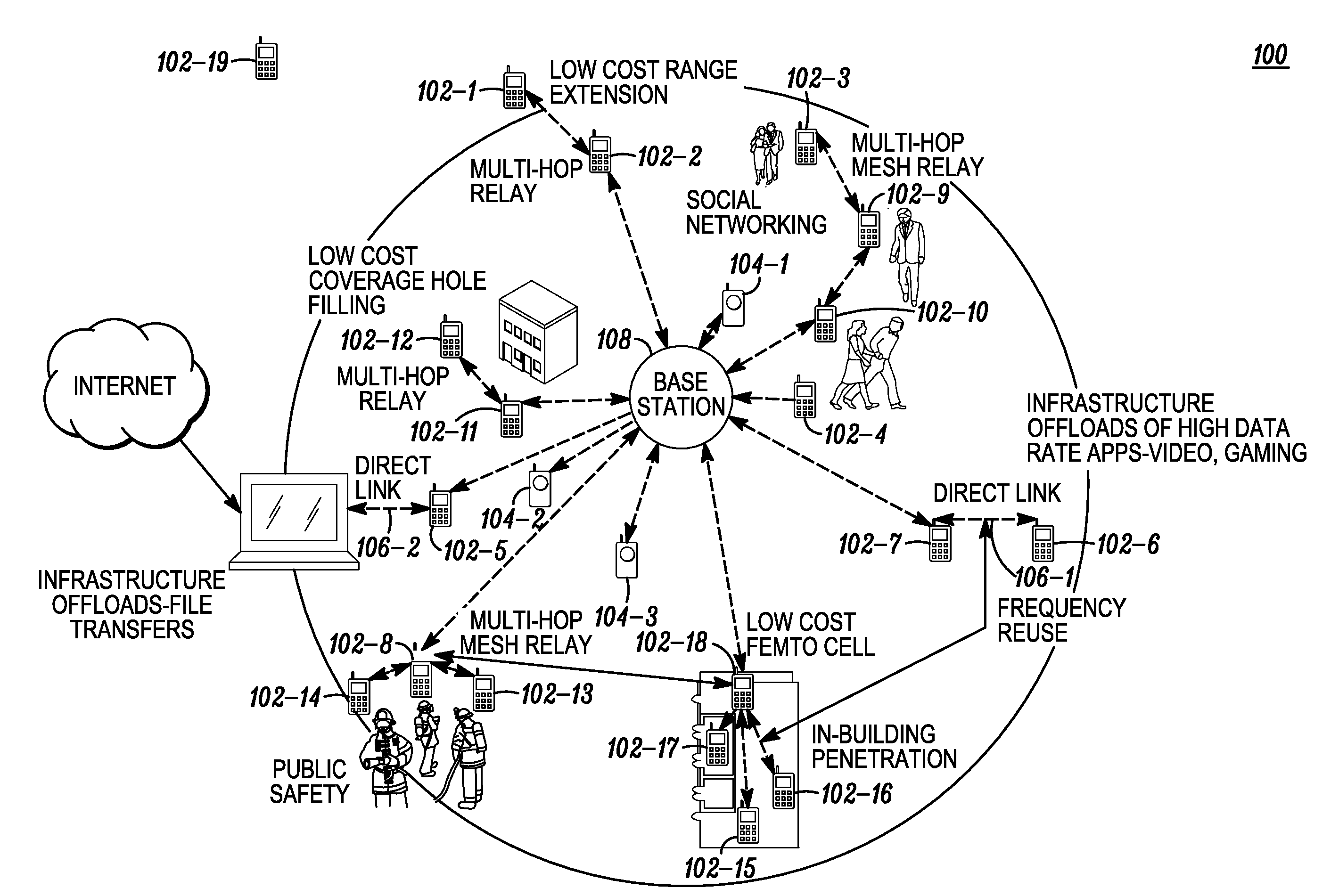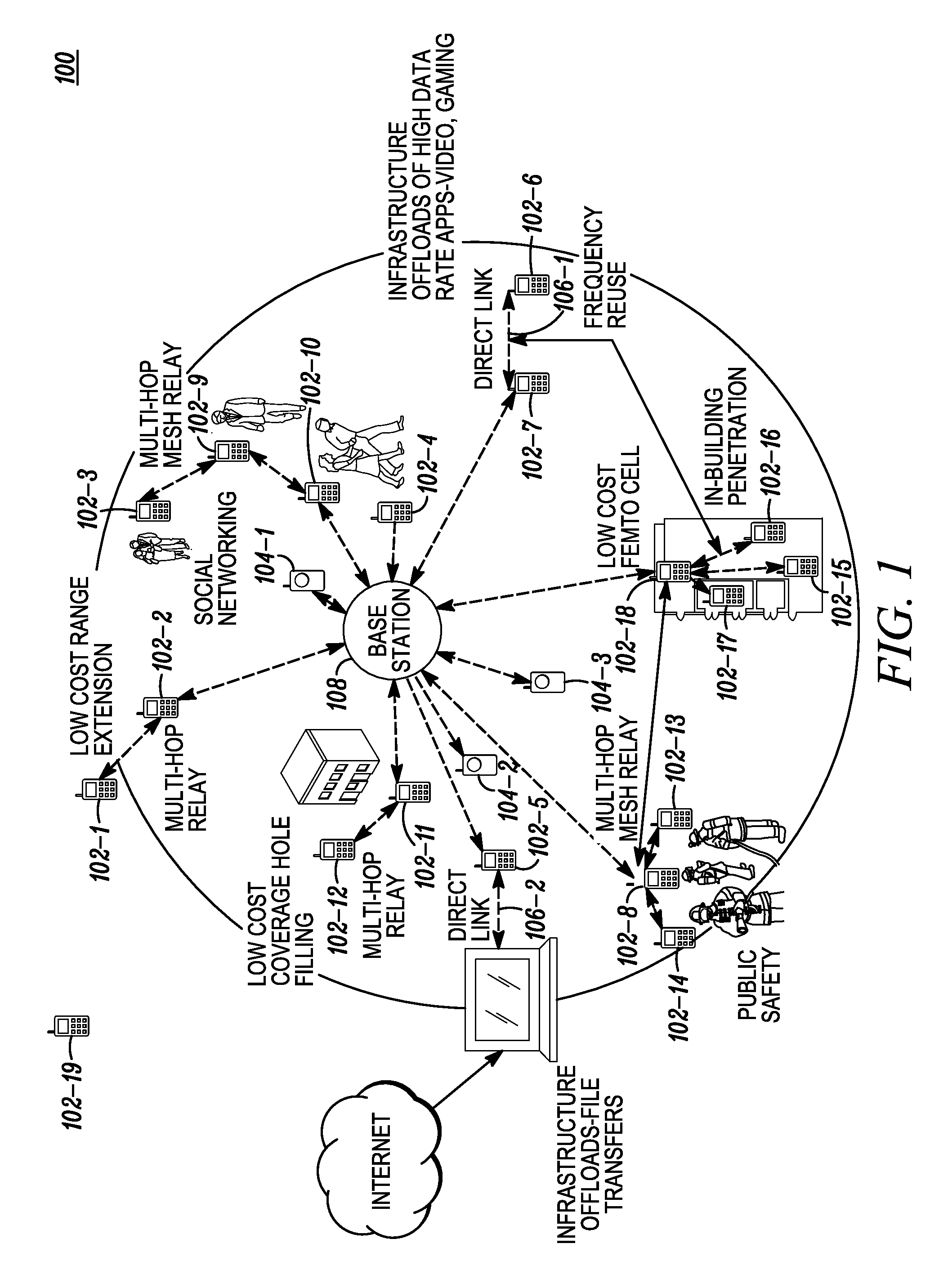System for enabling mobile coverage extension and peer-to-peer communications in an ad hoc network and method of operation therefor
a technology of peer-to-peer communication and ad hoc network, which is applied in the field of wireless communication networks, can solve problems such as multi-access interference resulting from synchronization errors, and inability to enable in-band and out-of-band multi-hop relays
- Summary
- Abstract
- Description
- Claims
- Application Information
AI Technical Summary
Problems solved by technology
Method used
Image
Examples
Embodiment Construction
[0024]As described in the “Background” previously herein, the IMT-Advanced Network Topology requirement proposes multi-hop, mesh and P2P (peer-to-peer) modes. As such, the IEEE 802.16m operational requirements call for multi-hop relay support as well as self-optimization of network performance with respect to service availability, quality of service (QoS), network efficiency and throughput. Multi-hop relay opens tremendous opportunities for network architectures that scale with low cost mobile stations. The present invention exploits the peer-to-peer aspect of multi-hop relay with direct link and multi-hop mesh networking topologies. The multi-hop relay and self-optimization requirements support use cases such as low cost coverage extension, in-building penetration, public safety, and peer-to-peer communication for infrastructure off-loading, and applications such as social networking and gaming. An added benefit of peer-to-peer direct link is improved frequency reuse.
[0025]The pres...
PUM
 Login to View More
Login to View More Abstract
Description
Claims
Application Information
 Login to View More
Login to View More - R&D
- Intellectual Property
- Life Sciences
- Materials
- Tech Scout
- Unparalleled Data Quality
- Higher Quality Content
- 60% Fewer Hallucinations
Browse by: Latest US Patents, China's latest patents, Technical Efficacy Thesaurus, Application Domain, Technology Topic, Popular Technical Reports.
© 2025 PatSnap. All rights reserved.Legal|Privacy policy|Modern Slavery Act Transparency Statement|Sitemap|About US| Contact US: help@patsnap.com



